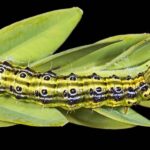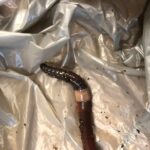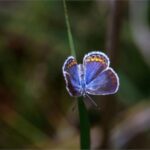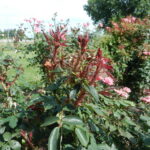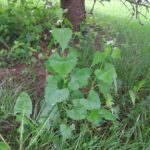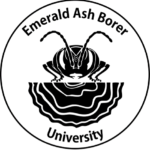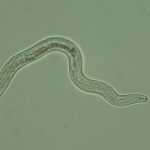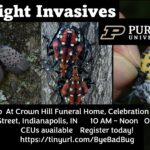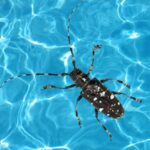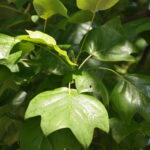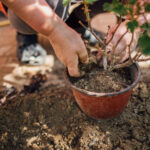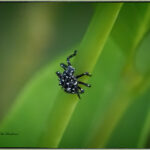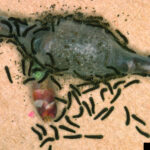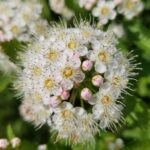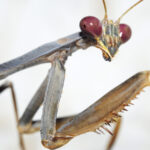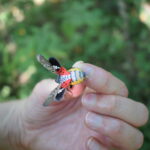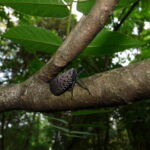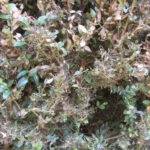Resources for landscapes and gardens in the Midwest
Search Results: invasive
The problem There is another invasive species close to Indiana that landscaping and nursery professionals should look for. Box tree moth (Cydalima perspectalis) is native to East Asia, and was first detected in 2021 in New York. Detections in Michigan in 2022 have resulted in a quarantine zone for boxwoods[Read More…]
Read MoreIf you spend any time reading about native landscapes, you will quickly find numerous articles and guides for plants that are good for pollinators. Many native pollinator species are in decline, and choosing plants that support their lifecycle is a great way homeowners and landscapers can engage with the effort[Read More…]
Read MoreRose rosette disease is a severe problem for rose growers and occurs widely throughout many rose growing regions of the US, especially from the mid-South into the Midwest. The problem was described on roses in the early 1940s but actual cause of the disease remained murky until the pathogen was[Read More…]
Read MoreGarlic mustard (Alliara petiolata) can be found in public parks, backyards, meadows, forests, gardens, and along roadsides throughout Indiana. The leaves have a strong garlic smell to them. Garlic mustard was first introduced from Northeastern Europe in the 1860s in Long Island, New York. Immigrants from Europe used it for[Read More…]
Read MoreEAB University is about to start its fall semester, bringing you the information you need about emerald ash borer and other invasive pests and diseases that are now impacting our trees, forests and woodlands. Here’s a schedule of the webinars we have locked in so far. We will update you[Read More…]
Read MoreA new disease called Beech leaf disease (BLD), associated with native and ornamental beech trees (Fagus spp.), has been making its way eastward from Lake Erie. First observed in 2012, trees show dark interveinal leaf banding, deformation of the banding tissue, and leaf curling under increased disease severity. Leaves can[Read More…]
Read MoreLearn how to protect Indiana from invasive species at a free workshop. Professor Cliff Sadof of Purdue University and Carrie Tauscher, Arboretum Director of the Crown Hill Heritage Foundation will show you the best way to look for and report invasive species and provide a chance to practice reporting on[Read More…]
Read MoreAll plants can fall victim to insects, diseases, and environmental problems. How they respond to this stress is often the same: Wilting, yellowing, holes, rots, blight—it’s a long list! With so much overlap in symptoms, it can be quite a challenge for people to identify their plant health problems accurately,[Read More…]
Read MoreHoosiers Citizens Report Spotted Lanternfly in Northern IN. Report finds to 866-663-9684.
Read MoreChecking your pool filter and your trees could save your neighborhood from invasive pests.
Read MoreHoneydew, or the sticky liquid excrement that accumulates beneath trees infested with sucking insects, can attract stinging insects, pit the finish of your car, and coat your plants and picnic tables with black sooty mold. Learning which trees are prone to these problems can keep you from getting tied up in a sticky mess.
Read MoreJumping worm is spreading in the Midwest. Take these steps to avoid spreading it when planting this spring.
Read MoreThroughout the decades, many landscape fads have ended in failure. Dame’s rocket, wintercreeper, and purple loosestrife are a few examples of beautiful and vigorous ornamentals that have wreaked havoc on our natural ecosystems. Nursery professionals, as well as consumers, were unaware of the potential negative impacts of non-native species, often[Read More…]
Read MoreKey Information: Insects rarely get transported inside on decorations. DO NOT treat your decorations with insecticide. This is potentially dangerous to your family and pets. Don’t worry. Most of the insects that hitch a ride on decorations are harmless. A surprise, six-legged guest is the last thing most people[Read More…]
Read MoreFall and winter is a great time to update your knowledge of plants, pests, and new management techniques. We’ve compiled a list of upcoming events that will help you learn what you need to know for next spring.
Read MoreHoosiers find Spotted Lanternfly in IN. Report finds to 866-663-9684.
Read More- « Previous
- 1
- 2
- 3
- 4
- Next »
Sign-up to receive email news and alerts from Purdue Landscape Working Group:
